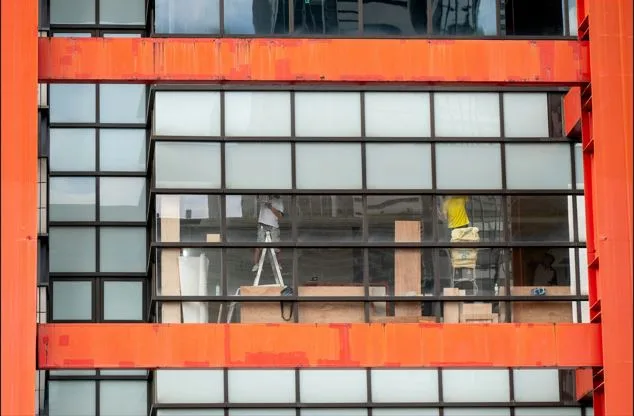The Rise of DEXs and the Future of Centralized Trading
Crypto trading didn’t just evolve—it split. On one side, you’ve got centralized platforms that are fast, familiar, and easy to use. On the other hand, DEXs are giving people more control and access without asking for permission. Both are growing, just in different directions.
This isn’t some battle for dominance. It’s just two ways of solving the same problem: how to trade assets with less friction and more trust. Some want custody and speed. Others want control and transparency. Neither model is going away. They’re just adapting to what people want. And both have a future—just not the same one.
Centralized Exchanges: Strength in Structure
Centralized exchanges have been around since the early days of crypto. They work like traditional brokers. Users deposit funds into an account. The exchange handles everything—from matching trades to holding the assets. It is simple, fast, and beginner-friendly.
Most people started their crypto journey on a centralized platform. It offered the convenience they were used to from stock trading apps. KYC was in place. Fiat ramps were available. Customer support existed. And advanced tools like margin trading, futures, and API integrations gave active traders what they needed.
But all of this came with a catch. Users gave up custody. The exchange controlled the private keys. When something went wrong, people could lose access to their funds. Hacks, freezes, or regulatory crackdowns made that risk very real.
The Rise of DEXs: Control Without Permission
Decentralized exchanges flipped the model. There is no signup. No custody. No third party holding your funds. Users connect their wallets, sign a transaction, and trade directly from their accounts.
It started small with projects like EtherDelta, but the real breakthrough came with Uniswap. Its automated market maker model removed the need for order books. Liquidity pools made it easier for anyone to become a market maker. That changed everything.
DEXs brought true peer-to-peer trading into the mainstream. They offered access to any token, not just the ones listed by centralized gatekeepers. They operated around the clock with no downtime. And more importantly, they proved that trading could happen without middlemen.
What DEXs Got Right
Permissionless Access
Anyone with a crypto wallet can use a DEX. There is no account approval or documentation process. This is especially valuable in regions where access to centralized platforms is limited or blocked.
Self Custody
DEX users do not hand over their assets. Funds stay in the wallet until a trade happens. That means fewer points of failure and no risk of an exchange locking or losing your tokens.
Token Variety
Since DEXs are built on open networks, any token created on that chain can be listed. There is no approval process. This makes DEXs the first stop for new projects and experimental assets.
Transparency
Every trade is recorded on-chain. Anyone can verify transactions and track liquidity. There is no hidden volume or fake order books.
The Challenges DEXs Still Face
For all their benefits, DEXs are far from perfect. They trade simplicity for complexity. They assume a level of user knowledge that not everyone has.
Slippage and front-running are real concerns. Liquidity for large trades can be thin. And if something goes wrong, there is no support desk to call. You are on your own.
Regulators are also paying attention. Decentralization does not equal immunity. As more money flows through DEXs, the pressure to comply with legal frameworks is growing.
Centralized Platforms Are Changing Too
The smartest centralized exchanges are not standing still. They are adopting lessons from the DEX model. Some now offer proof of reserves. Others have launched hybrid products that allow on-chain custody with off-chain execution speed.
These platforms are also focusing on security. Multi-signature wallets, third-party audits, and advanced monitoring systems are now standard. They know the bar has been raised.
More importantly, centralized exchanges still dominate fiat onboarding, high-frequency trading, and compliance. These are areas where DEXs are not yet able to compete at scale.
The Future: Not One or the Other
It is not about DEXs replacing centralized exchanges. It is about both models evolving to meet different needs. Retail users who care about control will continue moving toward decentralized platforms. Institutions and professional traders will stay where liquidity, compliance, and speed are critical.
The future is likely to blur the lines even more. We will see centralized interfaces that connect to decentralized liquidity. We will see wallets that let users toggle between models. And apart from all these, infrastructure providers will continue to build the pipes that connect everything.
Final Thoughts
Crypto trading is still evolving. Decentralized exchanges proved you don’t need to trust a third party when the code handles it all. Centralized platforms got the message—they’ve stepped up on speed, security, and user experience. Both are changing, and both have their place.
If you’re building in this space, now’s the right time. The market wants better tools, not just hype. Whether it’s a DEX, a centralized platform, or something in between, you need a team that actually understands how both sides work. That’s where a solid crypto exchange development company can make the difference. This isn’t about picking a side—it’s about building something that works.





